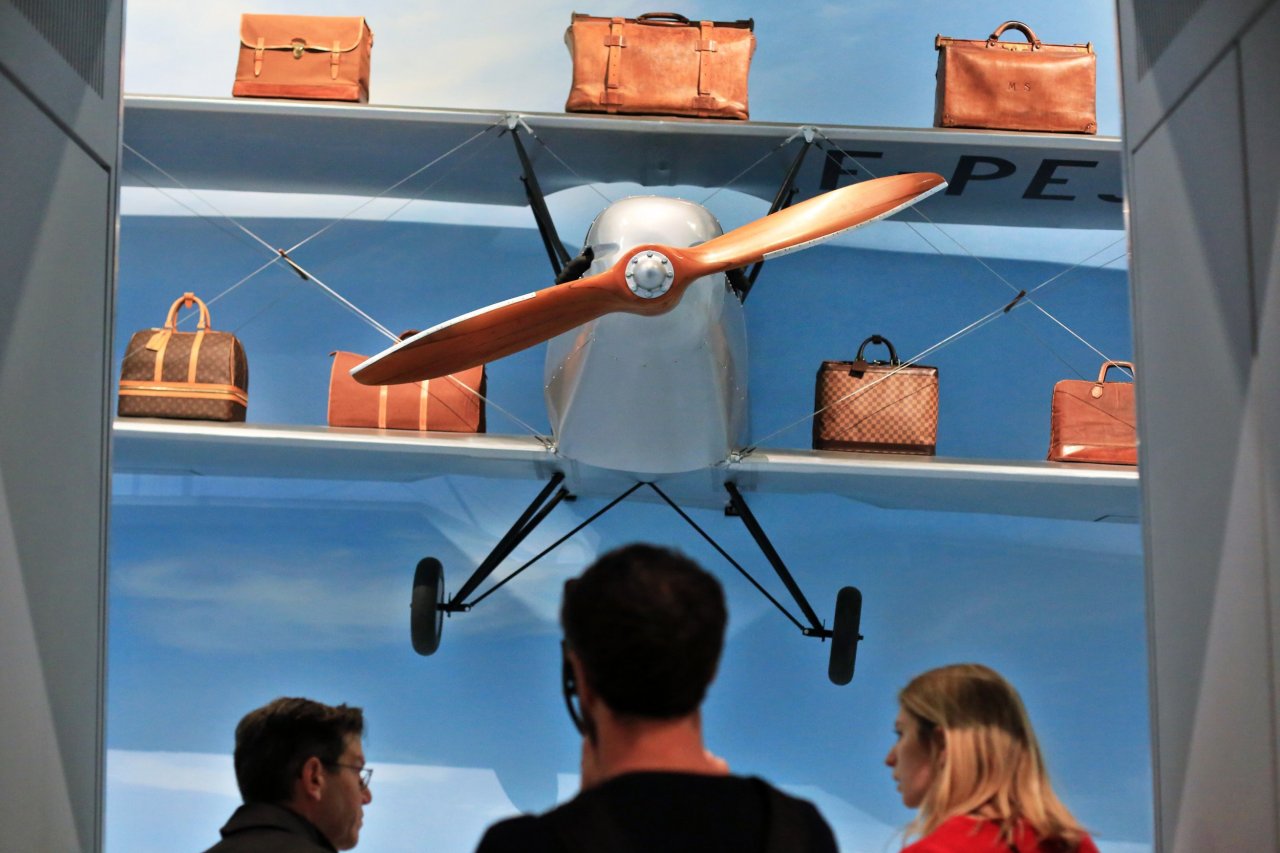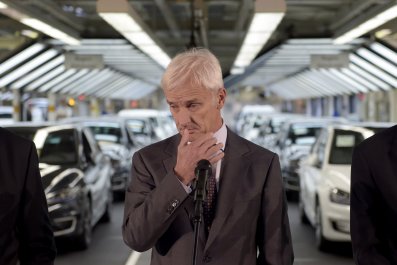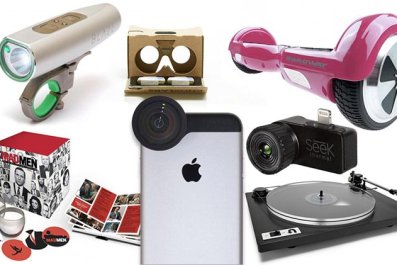Michael Burke, the CEO of Louis Vuitton, is doing his best to convince me that there is link between Christian Dior adding his initials to his hard-sided Louis Vuitton suitcase in the middle of the last century and street artist Stephen Sprouse daubing graffiti over the top of the hallowed monogrammed canvas case at the beginning of this century. Apparently it comes down to "tagging."
I am not sure that I quite buy the Sprouse-Dior connection, but if anyone can sell it to me, it is Burke: He has a mind that moves at a speed way above what I suspect to be the legal limit for synaptic activity, and he is taking me on a personal guided tour of the "Louis Vuitton" exhibition at the Grand Palais in Paris.
The exhibition opened less than a month after the Paris attacks, and so the timing is perfect as it celebrates what is so wonderful about France. The Grand Palais, a Belle Époque exhibition hall, is a national monument. In England, we have the NEC in Birmingham or Olympia in London; in France they have the Grand Palais. As the name suggests, it is large and palatial, more than big enough to accommodate an exhibition of the work of Madame Vigée-LeBrun, a Picasso show and a Louis Vuitton exhibition at the same time. It is, says Burke, a juxtaposition that a generation ago would have been inconceivable. Back then, culture and commerce were rigorously separated. The business he now helms has done much to close that divide, and this show is evidence of the change that has come about.
The first thing one sees upon entering is a giant circular, heavily impastoed portrait of Vuitton as a young man. When he was 14, he was a penniless Dick Whittington figure who walked from the Jura Mountains to Paris, where he made his name and his fortune, starting as a professional packer and dying a rich industrialist. This portrait is not an old painting; it is a 21st century work by the celebrated Chinese artist Yan Pei-Ming, based on forensic reconstructive techniques, using photographs of the prosperous old man. And that is part of the fun of this show: It is sort of sequential, sort of thematic and sort of not. You will find, for instance, the real Noé bag, which was devised in 1932 to carry five bottles of champagne, alongside its 1980 reappearance as a woman's handbag. Bags from a century ago are placed alongside models still in production, as if challenging the viewer to spot the differences.
The fashion or luxury brand museum show is a feature of the modern museumscape. The Alexander McQueen show is a crowd-puller, right up there with Van Gogh and King Tut. Patek Philippe, Chanel and Hermès have all recently had major shows at the Saatchi Gallery in London. Last year, Cartier had a big show at the Grand Palais, and now it is Vuitton's turn—although the French luggage house has been here before. In 1900, it exhibited at the famous Exposition Universelle, where it was renowned for a display that mimicked a ride in a railway carriage, complete with scenery on large rollers. This time, Vuitton is back as the star of its own show—and it has even re-created the railway "journey" of 1900.
This is no longer a case of big brands seeking the validation of a major cultural institution. Yes, of course the museum benefits and receives support for more—how does one say—curatorial shows, but these shows have genuine popular appeal. I saw crowds queuing in the rain to get inside the Patek exhibition in London. On the Sunday I went to Paris, Vuitton was packing them in, and friends complained that when it opened they had to queue for two hours.
If you like looking at old luggage as much as I do, there is much to enjoy here, from the tiny "flower" trunks that were given to clients as gifts during the Belle Époque (and of which so few have survived that they are now more valuable than the larger trunks); to a DJ box designed by Helmut Lang in 1996 for the safe transport of precious vinyl. Around 1,000 objects and documents are exhibited. Thus, the visitor can trace various narrative threads, such as the birth of soft-sided luggage with the canvas and leather steamer bag that was conceived as a laundry bag and made its debut in 1901. Or one can examine the genesis of the modern handbag, which can be seen in a series of black grained-leather bags of ascending size from 1900 to 1910 that were designed to hold women's gloves in the days before motorcars had glove compartments.
One can just gawp at luggage owned by Elizabeth Taylor, Christian Dior, Sacha Guitry or Errol Flynn's wife Lili Damita, among others. Damien Hirst's butterfly trunks are on view, as are Sprouse's graffiti bags and Yves Saint Laurent's book trunk. And then, amidst the celebrity relics, one comes across a Courbet canvas of an oak tree to illustrate the primary material with which the founder and eponym worked.
This show has almost universal appeal. Today's world is incredibly brand literate, and there are probably few communities on the face of the planet unaware of, say, the products of Louis Vuitton, Hermès or Chanel. Once upon a time, they were the names of individual craftspersons. Now they have become cultural phenomena, and as such they deserve investigation. And this sort of show is part investigation and part of the cultural phenomenon.
After a couple of hours, I begin to see where Burke is coming from with his tag comment. Luggage was painted with its owner's initials to tell pieces apart on the quayside or railway platform. But very soon a simple identification technique morphed into an exhibitionist form of self-expression. Take for instance Sacha Guitry's trunk: There is an extravagance about the lettering that would not look out of place on a music hall poster; and Paul Poiret's trunk with its visual pun of a picture of a pea (pois) and some vertical lines (raies) goes beyond mere identification, especially when one notes that the famous couturier also rearranged the lattice of ribbon inside the lid. He was indeed tagging his Louis Vuitton trunk, just as Sprouse was tagging those early aughts Keepalls and, one could argue, just as Louis Vuitton is tagging the Grand Palais.





















